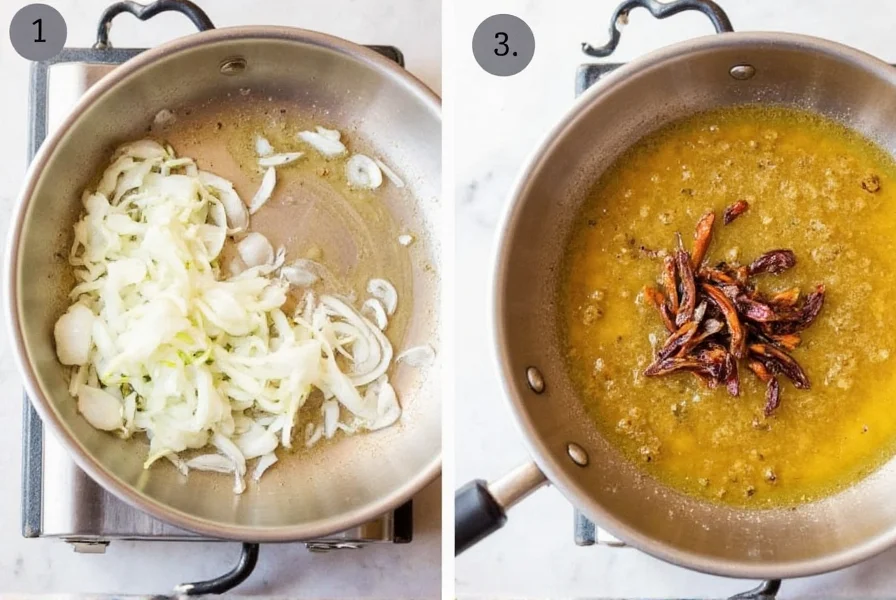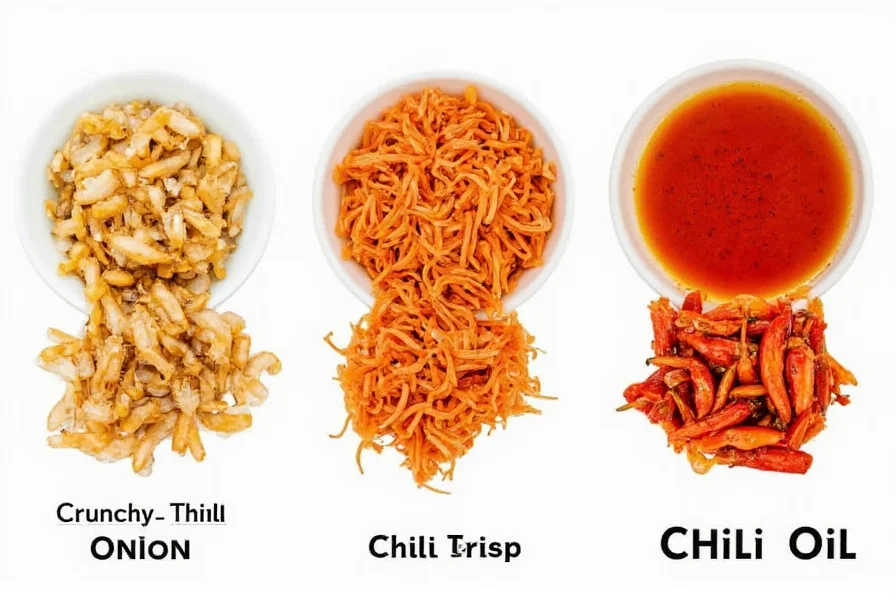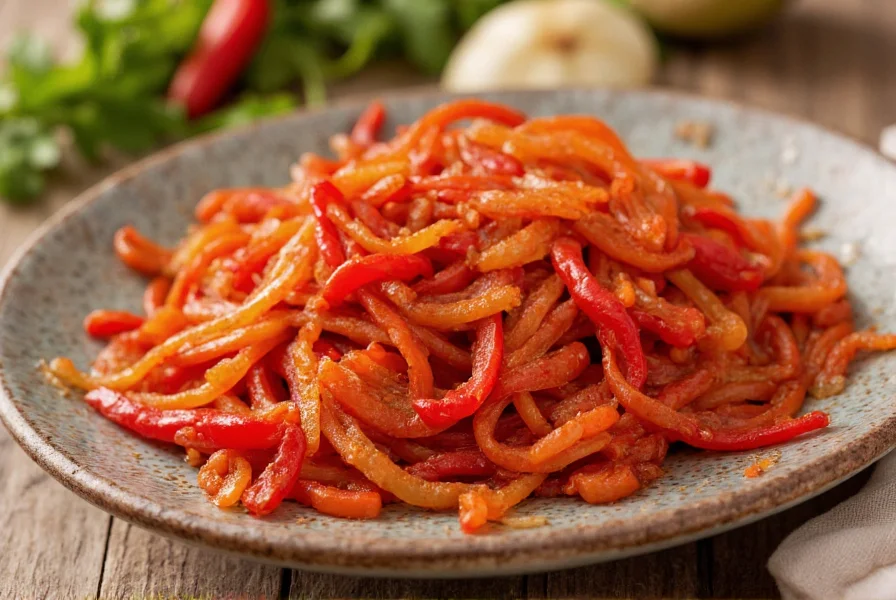Understanding what makes crunchy chili onion special begins with recognizing its dual texture and flavor profile. Unlike traditional chili oils that are primarily liquid, crunchy chili onion maintains distinct crispy elements that provide both auditory satisfaction and textural contrast when added to dishes. The magic happens through a careful frying process that transforms simple ingredients into a complex umami-rich topping.
The Essential Components of Authentic Crunchy Chili Onion
Creating perfect crunchy chili onion requires attention to three critical elements: ingredient selection, oil temperature control, and timing. The foundation consists of thinly sliced onions (typically yellow or red), dried red chili peppers (like arbol or Thai chilies), and a high smoke-point oil such as peanut or vegetable oil. Some variations incorporate garlic, ginger, or Sichuan peppercorns for additional complexity.
The texture transformation occurs through a two-stage frying process. First, the onions slowly cook until golden and crisp, then the chilies are added for a shorter fry to preserve their vibrant color and intense heat. The resulting mixture contains distinct crunchy elements rather than a homogenous paste, which is what distinguishes authentic crunchy chili onion from smoother chili oil preparations.
| Ingredient | Function | Common Variations |
|---|---|---|
| Yellow onions | Provides sweetness and crunch | Shallots, red onions |
| Dried red chilies | Delivers heat and color | Chili flakes, fresh chilies |
| Neutral oil | Medium for frying and preservation | Sesame oil (added later) |
| Aromatics | Enhances flavor complexity | Garlic, ginger, Sichuan peppercorns |
How to Make Crunchy Chili Onion at Home
Creating restaurant-quality crunchy chili onion requires precision but uses accessible ingredients. Start by thinly slicing one large yellow onion and removing stems from 10-15 dried red chilies. Heat 1 cup of neutral oil in a small saucepan over medium-low heat. Add the onions and cook slowly, stirring occasionally, until golden brown and crisp (about 15-20 minutes). Remove the onions with a slotted spoon and drain on paper towels.
Keeping the oil warm (but not smoking), add the dried chilies and fry for 2-3 minutes until they darken slightly but don't burn. Remove chilies with a slotted spoon and drain. For enhanced flavor, some cooks add a tablespoon of sesame oil at the end. Combine the crispy onions and chilies in a clean jar, covering completely with the infused oil to preserve freshness.

Perfect Pairings: Culinary Applications for Crunchy Chili Onion
The versatility of crunchy chili onion makes it suitable for numerous dishes beyond its traditional Asian applications. This condiment shines when sprinkled over:
- Ramen and other noodle soups (adds texture contrast to broth-based dishes)
- Steamed or fried rice (provides both flavor and crunch)
- Grilled meats and seafood (complements charred flavors)
- Avocado toast (elevates simple breakfast dishes)
- Roasted vegetables (adds finishing touch to vegetable sides)
- Scrambled eggs or omelets (enhances breakfast proteins)
Professional chefs often use crunchy chili onion as both a flavor enhancer and textural element. Unlike liquid chili oils that primarily affect taste, the crunchy version provides audible and tactile satisfaction that engages multiple senses. The contrast between soft dishes and the crispy topping creates a more dynamic eating experience.
Storage and Shelf Life Considerations
Proper storage maintains both safety and quality of homemade crunchy chili onion. When stored in a clean, airtight container in the refrigerator, it typically remains fresh for 2-3 weeks. The oil should completely cover the solids to prevent spoilage. Some commercial versions contain preservatives that extend shelf life to several months, but homemade versions lack these additives.
Watch for signs of spoilage including off odors, mold growth, or significant darkening of the oil. If using fresh aromatics like garlic, consume within 10 days to prevent potential botulism risks associated with oil-preserved fresh ingredients. For longer storage, freeze portions in ice cube trays then transfer to freezer bags.
Distinguishing Crunchy Chili Onion from Similar Condiments
Many consumers confuse crunchy chili onion with related condiments. Understanding these differences helps select the right product for specific culinary applications:
- Chili crisp - Contains additional ingredients like fermented black beans and often has a thicker, more complex paste-like consistency
- Chili oil - Primarily liquid with infused chili flavor but minimal solid components
- Sambal oelek - Indonesian chili paste made from fresh chilies, vinegar, and salt without the crunchy elements
- Crunchy chili onion - Specifically features distinct crispy onion and chili pieces suspended in oil

Regional Variations Across Asian Cuisines
While commonly associated with Chinese cuisine, variations of crunchy chili onion appear throughout Asia with distinctive regional characteristics:
In Sichuan cooking, the version often includes numbing Sichuan peppercorns and features smaller, more intensely fried chili pieces. Thai preparations might incorporate fresh red chilies alongside dried varieties for brighter heat. Vietnamese versions sometimes include shallots instead of onions and use milder chilies for a more subtle kick. Japanese renditions occasionally add bonito flakes for umami depth.
These regional differences highlight how a simple concept adapts to local palates while maintaining the core crunchy texture that defines the condiment. Understanding these variations helps home cooks select or create versions that best complement specific dishes.
What's the difference between crunchy chili onion and chili crisp?
Crunchy chili onion primarily features crispy fried onions and chili peppers in oil, while chili crisp contains additional ingredients like fermented black beans, garlic, and sometimes nuts or seeds, creating a thicker, more complex paste with varied textures beyond just crunch.
Can I make crunchy chili onion without deep frying?
Yes, you can achieve similar results using an air fryer or oven. Thinly slice onions and chilies, toss with minimal oil, and bake at 300°F (150°C) until crisp. The texture won't be identical to deep-fried versions but provides a healthier alternative with reduced oil content while maintaining crunch.
How spicy is typical crunchy chili onion?
The heat level varies significantly by recipe and brand. Most commercial versions offer medium heat that enhances dishes without overwhelming them. You can control spiciness by adjusting the type and quantity of chilies used—milder varieties like ancho chilies create gentler versions, while Thai or bird's eye chilies produce intense heat.
What dishes work best with crunchy chili onion topping?
Crunchy chili onion complements noodle dishes (especially ramen), rice bowls, steamed vegetables, grilled proteins, soups, and even simple preparations like avocado toast or scrambled eggs. Its dual texture and flavor profile enhance both Asian-inspired dishes and fusion cuisine where added crunch and mild heat would be welcome.
Why does my homemade crunchy chili onion become soggy?
Sogginess typically occurs when the oil temperature drops too low during frying or when moisture remains in the ingredients. Ensure onions are thoroughly dried before frying, maintain consistent oil temperature (325-350°F), and drain fried components well on paper towels before storing. Complete submersion in oil during storage also helps maintain crispness.











 浙公网安备
33010002000092号
浙公网安备
33010002000092号 浙B2-20120091-4
浙B2-20120091-4